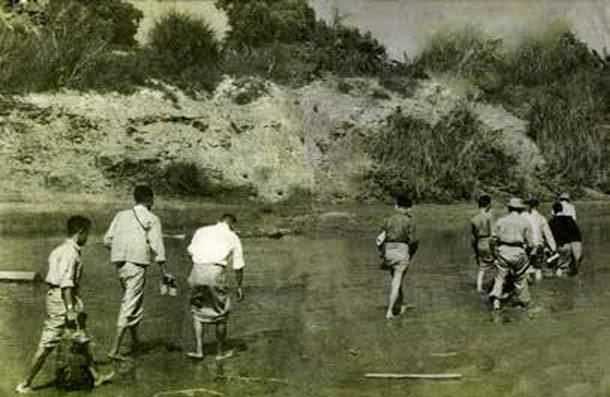 | ||
Ceasefires in Myanmar have been heavily utilized by the Burmese government as a policy to contain ethnic rebel groups and create tentative truces. The first ceasefire was arranged by the State Law and Order Restoration Council in 1989, specifically spearheaded by Khin Nyunt, then the chief of Military Intelligence, with the Kokang-led National Democratic Alliance Army, which had recently split from the Communist Party of Burma due to internal conflicts.
Contents
Background
The internal conflict in Myanmar began after the country's independence in 1948, as successive central governments of Myanmar (or Burma) fought myriad ethnic and political rebellions. Some of the earliest insurgencies were by Burmese-dominated "multi-colored" leftists and by the Karen National Union (KNU). The KNU fought to carve out an independent Karen state from large swaths of Lower Myanmar. Other ethnic rebellions broke out only in the early 1960s after the central government refused to consider a federal style government. By the early 1980s, politically oriented armed insurgencies had largely withered away, but ethnic-based insurgencies remained alive and well during the conflict.
In the 1980s, rebel groups controlled most of the country's periphery. The two major organisations fighting against the Burma Socialist Programme Party-led government, were 2 umbrella groups, the pro-Chinese Communist Party of Burma (allied to local Kokang Chinese, Wa and Shan groups), based along the Chinese-Burmese border and the pro-West National Democratic Force (made up of ethnic Mon, Karen, Karenni and Shan opposition groups), based along the Thai-Burmese border.
By the late 1980s, the Communist Party of Burma (CPB) had weakened considerably, because of waning Chinese financial support and internal strife. During the 1988 Uprising, the CPB failed to seize the opportunity to invoke political change. A month later, the State Law and Order Restoration Council (SLORC), a council of military men, staged a coup d'etat. Consequently, ethnic Wa and Kokang armed forces led a mutinee against CPB, forming the United Wa State Party (UWSP) and National Democratic Alliance Army (NDAA) respectively. SLORC used this opening to arrange ceasefires with the armed rebel groups that had just mutineed, under a policy designed by Khin Nyunt, who was then the Chief of Military Intelligence. The deal fell short of its nationwide billing, with seven of the 15 armed groups invited declining to sign due to disagreements over who the process should include and ongoing distrust of Myanmar's semi-civilian government and its still-powerful military.
National Reconciliation after 1988
Government troops heavily used 4 cuts counter insurgency tactics in ethnic areas in 1990s. Most ethnic groups became armed struggle after first military coup in 1962 and successive military governments used four cuts counter insurgency policy in ethnic areas. The “four cuts” policy involved cut off communications among rebel armed groups as well as local people, cut off information among people and trade route in designated territories, searches and destruction of any possible supplies in the areas On the other hand, the military government forced ethnics groups to sign ceasefire agreements with ethnic rebels groups while government troops were trying to root out their main bases in 1990s. In meanwhile, ethnic minorities’ political parties which won seats in 1990 elections and formed the second largest pro-democracy block after NLD were severely oppressed in cities. By the end of the century, there were 20 armed opposition groups ceased fire with governments However, government made political dialogues with neither cease fire groups nor winning political parties. Therefore, some ethnic groups didn't cease fire with government and continued armed struggle. The ethnic populations were the most suffered from a result of long-standing hostilities with the central government. They have been treated as enemies of the state and second class citizens
Agreements
The signed ceasefire agreements have been nothing more than temporary military truces to suspend fighting and preserve the status quo, allowing the rebel groups to retain administrative control of their territories. Weaker or splinter rebel groups typically wield forfeit their territories to the government. Most agreements simply stipulated that the groups would be allowed to retain their arms and territories until the promulgation of a new Constitution.
As part of the ceasefires, the government began the Border Area Development Programme in 1989, which became a ministry-level body in 1992, as Ministry for the Progress of Border Areas and National Races and has built road infrastructure, schools and hospitals in rebel-occupied territories.
On 31 March 2015, Burmese President Thein Sein signed a nationwide ceasefire draft along with many ethnic leaders and government officials.
Border Guard Forces
In April 2009, Lieutenant General Ye Myint led a government entourage to meet with Kokang, Shan and Wa insurgent groups, to discuss plans to create "collective security" formed by insurgent groups and under the command of the Tatmadaw, which would eventually lead to the creation of the Border Guard Forces. In 2009, four of the insurgent groups, the Democratic Karen Buddhist Army, the Kachin Defence Army (4th Brigade of the KIA), the New Democratic Army - Kachin (NDA-K) and the Pa-O National Organisation/Army (PNO/A), accepted the transition plan's terms and transformed into BGF groups.
List of ceasefires
Since 1989, the Burmese government has signed the following ceasefire agreements
